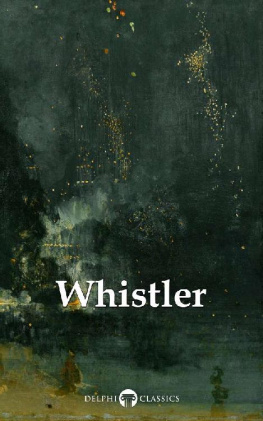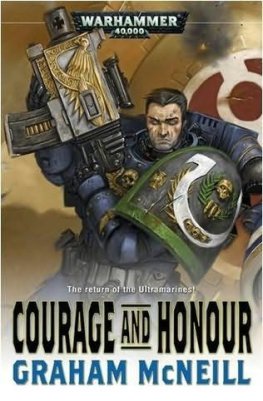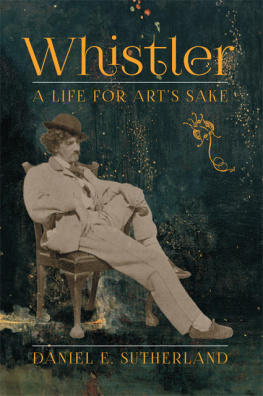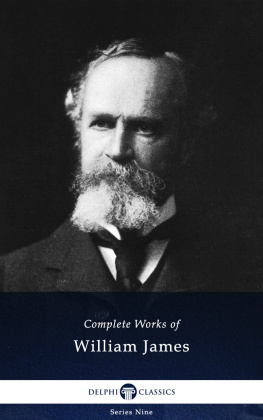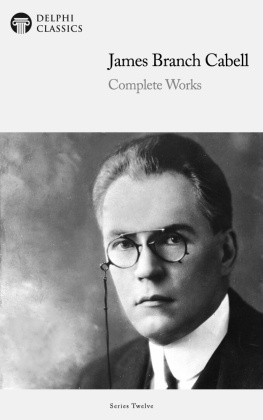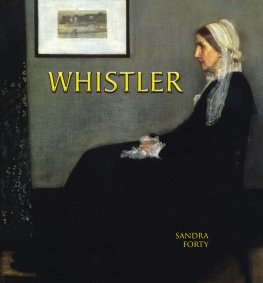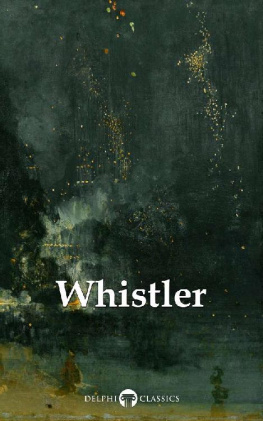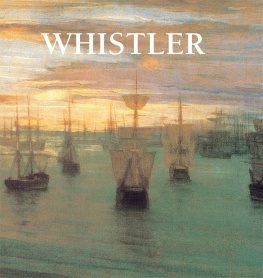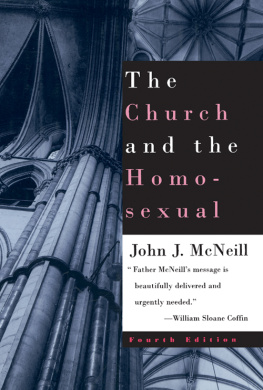
James Abbott McNeill Whistler
(1834-1903)

Contents

Delphi Classics 2017
Version 1

Masters of Art Series
James Abbott McNeill Whistler

By Delphi Classics, 2017
COPYRIGHT
Masters of Art - James Abbott McNeill Whistler
First published in the United Kingdom in 2017 by Delphi Classics.
Delphi Classics, 2017.
All rights reserved. No part of this publication may be reproduced, stored in a retrieval system, or transmitted, in any form or by any means, without the prior permission in writing of the publisher, nor be otherwise circulated in any form other than that in which it is published.
ISBN: 978 1 78656 509 9
Delphi Classics
is an imprint of
Delphi Publishing Ltd
Hastings, East Sussex
United Kingdom
Contact: sales@delphiclassics.com
www.delphiclassics.com
The Highlights

Lowell, Massachusetts James Abbott Whistler was born in Lowell on 10 July 1834, the first child of Anna Matilda McNeill and George Washington Whistler.

Portrait of Major George Washington Whistler by Henry Inman. The artist father was a railroad engineer.
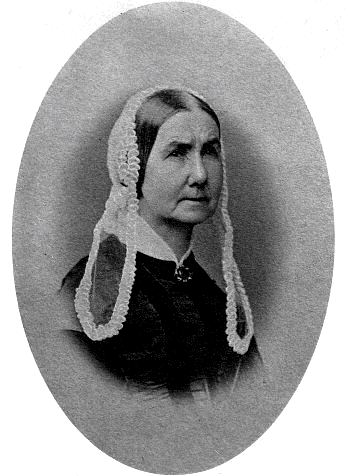
The artists mother, Anna Whistler, c. 1850. She was born in Wilmington, North Carolina, to Daniel McNeill, a physician, and Martha Kingsley McNeill, daughter of Zephaniah Kingsley, Sr. (one of the founders of the University of New Brunswick) and youngest sister of Zephaniah Kingsley, Jr. (a slave trader and plantation owner, and the husband of African-born Ana Madgigine Jai).

Lowell in 1876
THE HIGHLIGHTS

In this section, a sample of Whistlers most celebrated works is provided, with concise introductions, special detail reproductions and additional biographical images.
Portrait of Whistler with Hat

James Abbott McNeill Whistler was born in Lowell, Massachusetts, on 10 July 1834, the first child of Anna Matilda McNeill and George Washington Whistler. His father was a railroad engineer and Anna was his second wife. In 1839 the Whistlers fortunes greatly improved when the father received the appointment that would make his fortune and fame, becoming chief engineer for the Boston & Albany Railroad. The family relocated to Springfield, Massachusetts, one of the most prosperous cities in America at the time, where they purchased a mansion in an upper-class district.
Nicholas I of Russia learned of George Whistlers ingenuity in engineering the Boston & Albany Railroad and offered him a position in 1842, engineering a railroad from St. Petersburg to Moscow. In the winter of 1842, the Whistlers took the bold step of moving from Springfield to St. Petersburg. Young James took private art lessons in Russia, before enrolling at the Imperial Academy of Fine Arts at age of eleven. He followed the traditional curriculum of drawing from plaster casts and occasional live models, revelling in the atmosphere of art talk with older peers, and delighting his parents with a first-class mark in anatomy. In 1844, he met the noted artist Sir William Allan, who came to Russia with a commission to paint a history of the life of Peter the Great. Whistlers mother noted in her diary, the great artist remarked to me Your little boy has uncommon genius, but do not urge him beyond his inclination.
In 1847, the Whistler family spent some time in London with relatives, while the father remained in Russia. Whistlers brother-in-law Francis Haden, a physician, who was also an artist, encouraged his interest in art and photography. Haden took Whistler to visit collectors and to lectures, and gave him a watercolour set with some personal instruction. Whistler already was imagining an art career; he began collecting art books and he studied other artists techniques. When his portrait was painted by Sir William Boxall in 1848, the young Whistler exclaimed that the portrait was very much like me and a very fine picture. Mr. Boxall is a beautiful colouristIt is a beautiful creamy surface, and looks so rich. In his mounting enthusiasm for art, at fifteen, he informed his father by letter of his future direction. However, his father shortly died of cholera and the Whistler family was forced to move back to the mothers hometown of Pomfret, Connecticut. Whistlers art plans became vague, his future uncertain.
The family lived frugally and managed to get by on a limited income. His cousin reported that Whistler at that time was slight, with a pensive, delicate face, shaded by soft brown curlshe had a somewhat foreign appearance and manner, which, aided by natural abilities, made him very charming, even at that age. Whistler was sent to Christ Church Hall School with his mothers hopes that he would become a minister. He was seldom without his sketchbook and was popular with his classmates for his caricatures. However, it became clear that a career in religion did not suit him, so he applied to the United States Military Academy at West Point, where his father had taught drawing and other relatives had attended. He was admitted to the highly selective institution in July 1851 on the strength of his family name, despite his extreme nearsightedness and poor health history. During his three years there, his grades were barely satisfactory and he was incompetent at the military drill. Whistler flouted authority, was known for his sarcastic comments and quickly accrued demerits. Colonel Robert E Lee was the West Point Superintendent and, after considerable indulgence, he had no choice but to dismiss the young cadet. Whistlers major accomplishment at West Point was learning drawing and map making from the American artist Robert W. Weir.
At this uncertain point of his life, Whistler determined that art would be his future. For a few months he lived in Baltimore with a wealthy friend, Tom Winans, who furnished him with a studio and spending money. He made valuable contacts in the art community and also sold some early paintings to Winans. Whistler turned down his mothers suggestions for other more practical careers, informing her that with money from Winans, he was setting out to further his art training in Paris. Whistler was never to return to the United States again.
Next page
